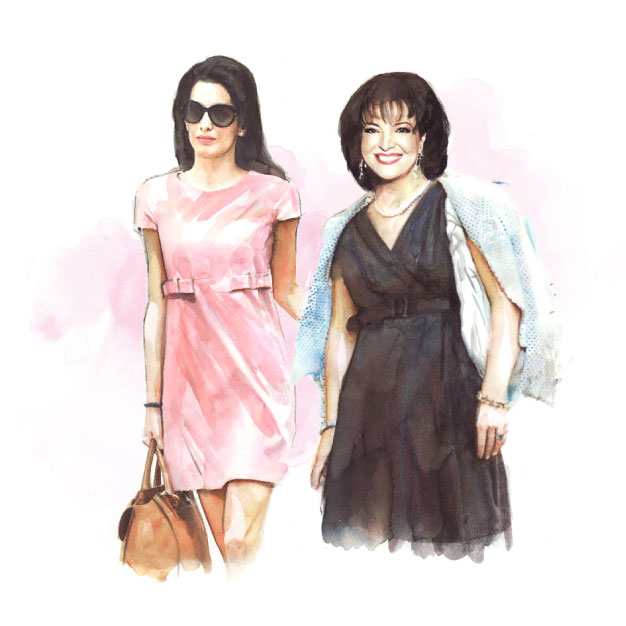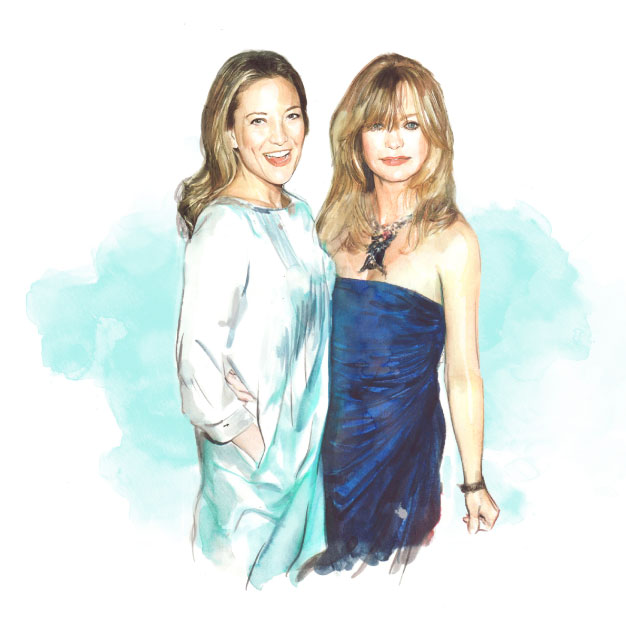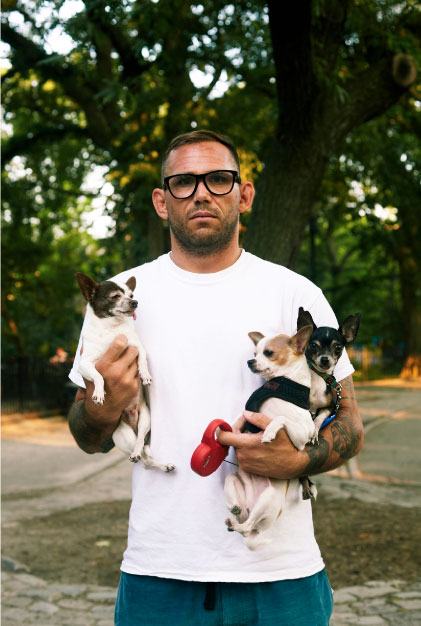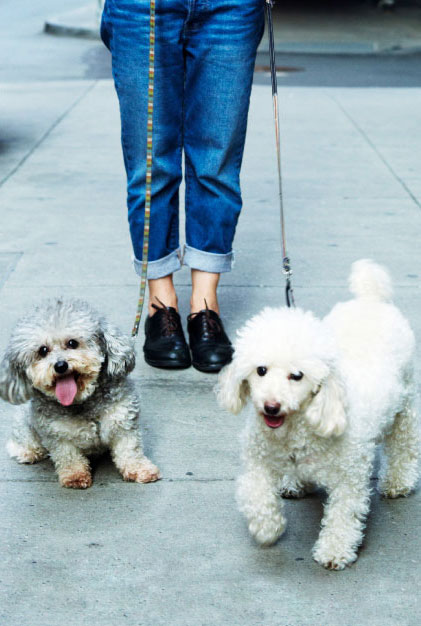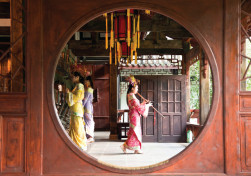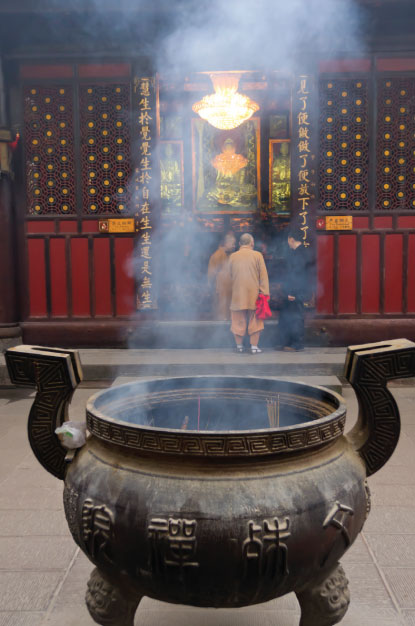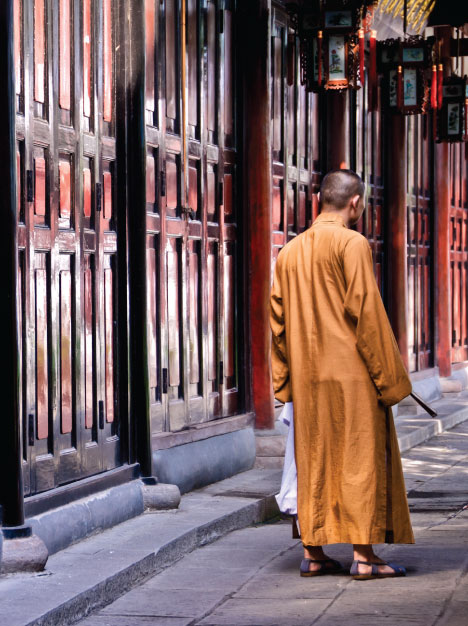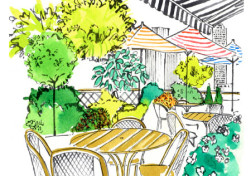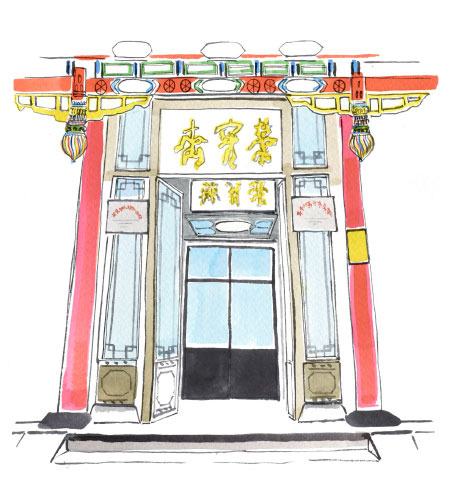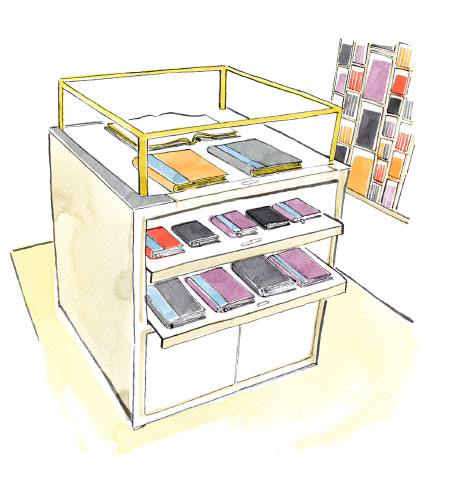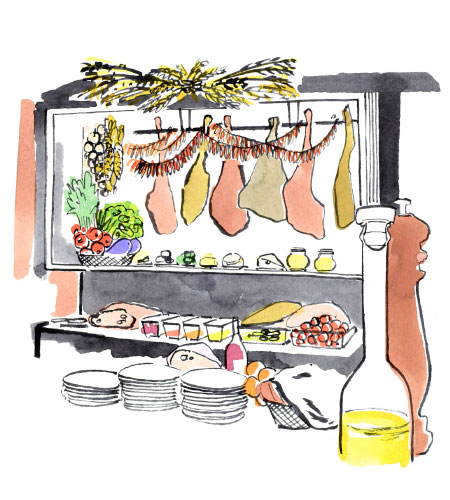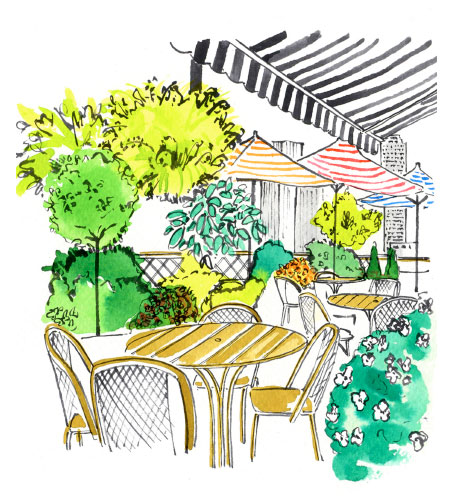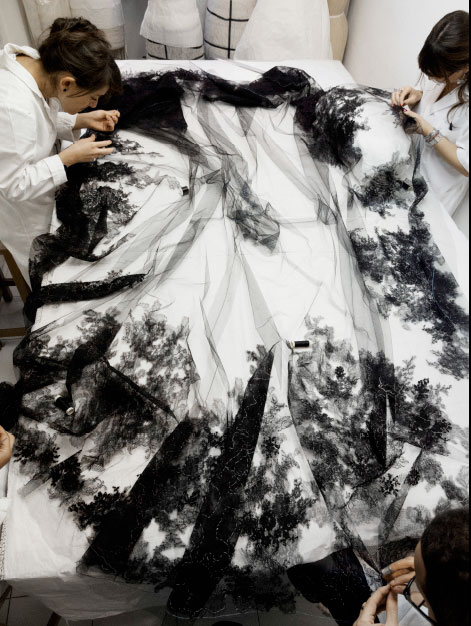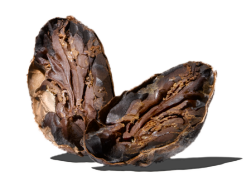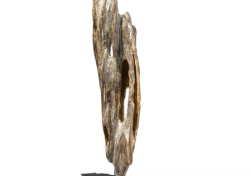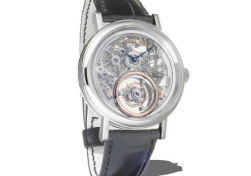When assessing traits that run through families, physical resemblance, values and attitudes are all up there with things we can expect to inherit from our parents. What is not often high on the list is personal style. One look, however, at some of the world’s most glamorous mother-daughter duos would show you that mothers are in fact as capable of impressing a sense of style on their offspring as they are good manners. Look at elegant women across the globe, and their daughters, and you will find women whose distinctive approach to fashion sings from the same songsheet. Style, it turns out, can be a mother-daughter thing.
In the case of Georgia May Jagger, daughter of Texan supermodel Jerry Hall and Rolling Stone Mick, an approach to style learnt from her parents shines out. Equal parts rock chick and vamp, as likely to be found in Vivienne Westwood as Jerry, she has explained, “My mum has taught me a lot about fashion in terms of what looks good and developing my own sense of style. One thing we both agree upon is that oversized black sunglasses, high heels and red lipstick are the key to dressing up any outfit.” Beyond handy accessorising tips, Hall has also taught her model daughters the power of theatricality in fashion. “I gave them all these films to watch. Actually, they both shot with Karl Lagerfeld, and he was saying to them, ‘OK, be Bette Davis in The Letter.’ And they knew what to do. He said to them, ‘Oh, my God. I never work with girls who know what I’m talking about. Your mother trained you so well!’ ”
If it is indeed possible to be trained in the ways of elegance and style, then surely Charlotte Casiraghi, daughter of Princess Caroline of Monaco and granddaughter of Princess Grace, ought to have had about as good a grounding as one could get. The spitting image of her glamorous mother, 28-year-old Charlotte and Princess Caroline are often photographed side by side, both dressed in Chanel Couture by their friend Karl Lagerfeld. Take one look at the sky-blue Giambattista Valli confection Charlotte wore to dinner celebrating her uncle’s marriage in 2011, the picture of demure yet youthful fashionability, and the maternal influence upon her is impossible to ignore.
Sometimes a mother’s sense of style is so marked, it moves beyond the influential to the fundamental. For the American accessories designer Fiona Kotur, her fashion-illustrator mother provides an endless well of inspiration when it comes to designing her signature evening bags. Describing her mother’s style as “very Coco Chanel with a touch of I Love Lucy”, she cites Sheila Camera Kotur’s brave approach to dressing as one of the most formative elements of her upbringing. “My mother has a strong sense of self and very much believes in individual style and expression. I learnt to value individual character over public opinion, with a bit of irreverence and humor tossed in.” Sheila still illustrates her daughter’s collections each season, encouraging her to push the boundaries of creativity, much as she has been doing since Fiona was at school. “I do remember one outfit she wore, in 1980,” says Fiona. “She arrived at my conservative girls’ school dressed in a completely deconstructed and ripped Comme des Garçons black sack and looked amazing. I was, even then, proud of her lack of self-consciousness.”
Even among the non-fashion set, whose thoughts are set perhaps on loftier matters, the use of fashion as a tool to express values is not lost. Both Hillary and Chelsea Clinton know the power of a well-cut jacket, as demonstrated at countless public occasions over the past decade, not least on the campaign trail. Each also has the confidence to indulge in her femininity without fearing it might damage her ability to be taken seriously. Take the then-Secretary of State, resplendent in fuchsia Oscar de la Renta at the wedding of her daughter, in custom Vera Wang, and you see two formidable women equally willing to indulge in fashion. Likewise, Amal Alamuddin, George Clooney’s fiancée – and more pertinently, an eminent human rights lawyer – and her newspaper-editor mother Baria also display a fun approach to dressing. A glance during the World Islamic Economic Forum at Amal’s mismatched shoes and bright pink Balenciaga coat followed by her mother in a bright purple suit and pearls, and a common appreciation for the colorful is clear.
One family where you would certainly consider exceptional influence to be wielded would be in the Wintour-Schaffer household. Although American Vogue editor Anna Wintour is often quoted as saying that she had wanted her daughter to follow her into fashion, her daughter Bee in fact works in television. However, in ways of style, the apple has fallen rather less far from the tree. Choosing such statement-making designers as Alexander McQueen, Bee is to be found on the Met Ball red carpet each year alongside her Chanel-clad mother in looks that are dramatic yet feminine, tasteful yet push the envelope just enough to be interesting – in other words, pure Wintour.
In families where the resemblance is more literal, you can probably thank location as much as maternal influence in the development of personal style. Hence the look modeled by Kate Hudson and Goldie Hawn, each the poster girl for their particular generation’s take on SoCal chic: the boho approach synonymous with the sort of Malibu-living, Aspen-holidaying, beach-frequenting life both actresses lead.
Head to Brazil, and you’ll find the Dellals, supermodel mother Andrea with her two daughters, accessories designer Charlotte and model Alice, all proponents of a particularly Latin approach to fashion. The trio may now live in London, but you’re as likely to find Andrea and Charlotte in their signature leopard print as you are in a warm winter coat, matching red lips and film-star coiffed hair to boot. Similarly, in the case of the Missonis in Italy, grandmother Rosita, mother Angela and daughter Margherita all display a certain free-spirited approach you would expect from a life lived in Varese, amid the rolling Italian countryside north of Milan where the family business is located and where all three women work. As Margherita explained once, “I grew up in the same place as my mother, seeing the same trees my mother saw when she was at work. The flowers I picked were the flowers that my grandma planted. We have different styles, I wouldn’t make the same clothes that my mom made, or my grandma, but we have the same taste.”
Certainly for Dee Poon, the Hong Kong-based managing director of shirt label Pye and daughter of fashion mogul Dickson Poon, her mother’s influence crossed not only sartorial boundaries but cultural ones, too. With a grandmother who grew up in 1940s Shanghai wearing traditional cheongsam dress, Poon’s mother Marjorie Yang, chairperson of Esquel shirt manufacturers, acts as a bridge between her family’s history in China and their Hong Kong life today. “I remember trips to the fabric stores with my mom and grandma, and the tailor coming to the house to measure and fit cheongsams for them that they would wear out to dinners or to daytime social events.”
Cross over to India, and you will find family duos like dynamic mother-and-daughter Rajshree and Aishwarya Pathy, co-founders of the India Design Forum, whose secret to style also lies in the melding of traditional elements of dress with a much more modern approach. “Mixing traditional with contemporary is something my mother has mastered,” says Aishwarya. “Traditional South Indian jewelry like our family heirlooms are extraordinarily beautiful and well crafted, and pairing them with something contemporary, Western and chic makes for a very eclectic look.” Not that that means her mother sticks to the traditional. “I think it’s fun to combine a pair of ancient gypsy earrings with a trendy blaring yellow cashmere jacket over an AllSaints purple shift, paired with slimming black pants and a busy fur print Dreyfuss sling purse,” says Rajshree. And her daughter? “She would shudder at the very idea!”
It’s not just families from countries with distinct cultural traditions who display tendencies identifiable across national seams, however. Take the French, and you’ll find dynasties whose innate take on something as simple as a pair of jeans marks them out as their own unique tribe. In the case of Jane Birkin (French in spirit, even if English-born) and her daughters Lou Doillon and Charlotte Gainsbourg, a trio of women synonymous with the sort of insouciant, less-is-more sexiness of which Jane herself was the first icon, their singular approach to fashion is so similar it must surely be in their DNA.
Or try the former editor of French Vogue, Carine Roitfeld, and her daughter Julia Restoin Roitfeld, both known for their sexy take on dressing. Carine points out that, while one can have the same fashion sense as one’s daughter, there are important differences to be found in actual wardrobe choices. “I would never share my daughter’s wardrobe,” she has said. “Every five years you have to go through your wardrobe and say, ‘This is possible, this is not possible.’ But you have to be happy with yourself.” As far as she is concerned, the secret to style is a way of dressing that doesn’t overwhelm the personality, an approach to fashion that is all about showing the woman rather than showing off the clothes. “The letter is more important than the envelope. But if you feel good in your envelope, then you will feel better about yourself.”
And therein, perhaps, lies the key to the sort of style mantras that should be passed down through generations. Less about wardrobe choices so much as an attitude to fashion, a mother can instil in her daughter confidence when it comes to the way she dresses. Confidence to make her own choices and to follow her own sartorial rules. Confidence to be her own woman and express her unique point of view. And surely that is something which we would all be glad to inherit.


